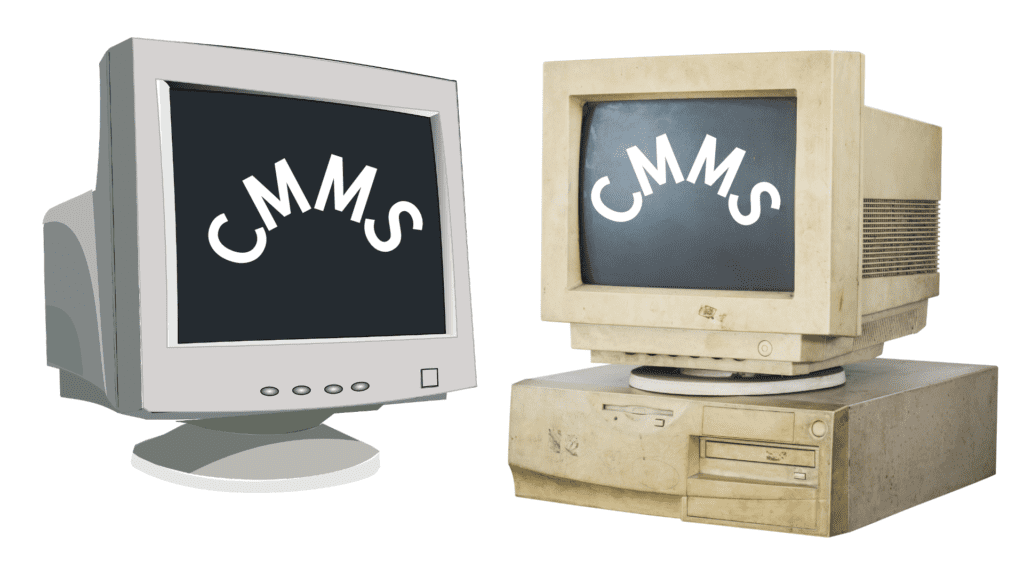Insurance for Asset Management Software Development Companies.

Asset management software development companies work in a unique environment with numerous risks and complexities.
The process of designing, deploying, and maintaining sophisticated software solutions for asset management is fraught with potential flaws that could jeopardise a company’s financial and operational stability. In this context, IT liability insurance stands out as an important safeguard.
IT liability insurance is a specialized form of coverage that addresses both general liability and professional indemnity.
General liability insurance protects companies from claims related to physical damage or personal injury resulting from their business operations.
In contrast, professional indemnity insurance covers claims of negligence, errors, or omissions in the professional services provided.
Together, these components create a comprehensive safety net tailored to the intricate environment in which asset management software development companies operate.
Having robust IT liability insurance is not merely a regulatory requirement or a contractual obligation; it is a strategic necessity.
In an industry where even minor oversights can lead to significant financial losses or reputational damage, this insurance ensures that a business can endure unforeseen events without catastrophic consequences.
Moreover, it signals to clients and stakeholders a commitment to professionalism and risk management, fostering increased trust and confidence.
Understanding the importance of IT liability insurance begins with recognizing the specific threats faced by asset management software development companies and the essential role of protective measures in promoting long-term business resilience.
This foundational knowledge sets the stage for a deeper exploration of the components and benefits of IT liability insurance, underscoring its vital role in safeguarding the future of companies in this dynamic field.
Table Of Contents:
1.0 Understanding Indemnity and Liability.
1.1 Indemnity Insurance.
1.2 Liability Insurance.
1.3 Integrated Coverage.
1.4 Importance of Comprehensive Coverage.
2.0 The Critical Role of IT Liability Insurance.
2.1 Professional Indemnity Insurance.
2.2 General Liability Insurance.
2.3 Emerging Risks and Challenges.
2.4 Strategic Risk Management.
3.0 Unique Risks in the Software Development Industry.
3.1 Technological Pressures.
3.2 Financial and Operational Strains.
3.3 Regulatory Compliance.
3.4 Mitigation Strategies.
4.0 Impact of External Pressures on Software Companies.
4.1 Client Demands.
4.2 Market Competition.
4.3 Risk Mitigation Strategies.
5.0 Specialized Insurance for the Technology Sector.
5.1 Tailored Coverage Solutions.
5.2 Expertise and Risk Mitigation.
5.3 Benefits of Specialized Insurers.
6.0 Navigating the Claims Process.
6.1 Selecting the Right Policy.
6.2 Establishing Clear Communication.
6.3 Steps for Filing a Claim.
7.0 Future Trends in IT Liability Insurance.
7.1 Increasing Cybersecurity Threats.
7.2 Integration of Artificial Intelligence.
7.3 Regulatory Changes.
7.4 Demand for Flexible Policies.
7.5 Focus on Risk Prevention.
8.0 Best Practices for Risk Management.
8.1 Comprehensive Risk Assessment.
8.2 Implementing Robust Cybersecurity Measures.
8.3 Ensuring Regulatory Compliance.
8.4 Developing a Strong Incident Response Plan.
8.5 Fostering a Culture of Risk Awareness.
8.6 Leveraging Technology for Risk Management.
9.0 Resources and Tools.
9.1 Industry Associations and Organizations.
9.2 Risk Management Software.
9.3 Cybersecurity Tools.
9.4 Educational Resources.
10.0 Conclusion: The Need for Comprehensive Protection.
1.0 Understanding Indemnity and Liability.
Liability and indemnity coverage are essential in the world of IT insurance for shielding asset management software development companies against a variety of hazards.
These two insurance components provide a complete safety net for companies in this industry, serving different but complementary functions.
1.1 Indemnity Insurance.
Indemnity insurance provides financial protection against losses or damages that may arise from errors, omissions, or negligence in professional services.
This coverage is essential for asset management software developers, as it typically includes compensation for legal fees, settlements, and other costs associated with claims.
Given the complexity and precision required in software development, indemnity insurance acts as a safeguard against potential financial repercussions stemming from professional oversights.
1.2 Liability Insurance.
Liability insurance, on the other hand, addresses the company’s responsibility for third-party claims resulting from its operations.
This coverage is crucial in scenarios such as data breaches or software failures, which can lead to significant financial liabilities.
Liability insurance covers expenses related to these claims, including legal defense costs and potential settlements or judgments.
It effectively protects the company from the fallout of incidents that might harm clients or other external parties connected to its services.
1.3 Integrated Coverage.
For asset management software development companies, having both indemnity and liability insurance under a single policy is vital.
This integrated approach ensures comprehensive protection against a broad spectrum of risks, providing a robust defense mechanism that shields the enterprise from financial and legal consequences.
The unique nature of this industry involves handling sensitive financial data and maintaining high performance standards, where any lapses can result in substantial financial losses or legal actions.
1.4 Importance of Comprehensive Coverage.
Understanding and implementing both indemnity and liability insurance is not merely beneficial but essential for the long-term security and trustworthiness of business operations.
In an environment where precision and reliability are paramount, these insurance components offer a critical layer of protection, ensuring that companies can focus on innovation and service delivery without the constant threat of potential liabilities..
2.0 The Critical Role of IT Liability Insurance.
It’s not only wise but also essential to have comprehensive coverage through IT liability insurance in the fascinating world of software development.
Asset management software development companies face unique risks due to the nature of their operations, which involve handling sensitive financial data and delivering complex software solutions.
IT liability insurance provides a crucial layer of protection, enabling these companies to navigate their specific challenges with confidence.
2.1 Professional Indemnity Insurance.
One of the most critical components of IT liability insurance is professional indemnity coverage. This type of insurance protects companies when their advice or services result in financial loss for clients.
For example, if a software solution implemented by the company leads to a significant operational failure, causing monetary damages, clients may seek compensation. Professional indemnity insurance ensures that the company can handle such claims without jeopardizing its financial stability.
2.2 General Liability Insurance.
Beyond professional indemnity, general liability insurance plays a pivotal role in safeguarding software development companies.
This insurance becomes indispensable when software products or IT consulting services result in third-party injury or property damage.
Consider a scenario where a software bug in an asset management solution causes a system malfunction, leading to physical damages in a client’s office.
In such cases, general liability insurance covers the expenses, alleviating the financial burden on the software development company.
2.3 Emerging Risks and Challenges.
The landscape of IT and software development is continually evolving, bringing forth new risks and challenges.
Cybersecurity threats, data breaches, and intellectual property disputes are becoming increasingly common. IT liability insurance acts as a robust shield, providing comprehensive protection against these emerging risks.
This allows companies to focus on innovation and service delivery rather than being bogged down by potential liabilities.
2.4 Strategic Risk Management.
Understanding the critical role of IT liability insurance and incorporating it into risk management strategies is essential for asset management software development companies.
It ensures that they can navigate the complex web of industry-specific risks while maintaining operational continuity and client trust.
By securing comprehensive IT liability insurance, companies demonstrate a commitment to professionalism and risk management, fostering greater trust and confidence among clients and stakeholders.
3.0 Unique Risks in the Software Development Industry.
The software development industry, particularly in asset management, is fraught with unique and complex risks that demand careful navigation.
Rapid technological advancements drive these challenges, compelling companies to innovate and deploy new software solutions swiftly to remain competitive. This urgency can compromise development processes, leading to coding errors and software defects, which are particularly problematic when managing sensitive data or financial transactions where precision is crucial.
3.1 Technological Pressures.
The pressure to innovate quickly often results in expedited development cycles, where thorough testing and quality assurance might be overlooked.
This can lead to the release of software with vulnerabilities or bugs, potentially causing significant operational disruptions for clients.
Such issues not only affect client satisfaction but also pose substantial financial and legal risks to the development company.
3.2 Financial and Operational Strains.
As software companies grow, they face increasing operational costs and investor demands for rapid returns on investment.
This economic pressure can lead to cost-cutting measures, such as overworking staff or reducing the scope of quality checks and testing.
These shortcuts can result in large-scale software failures, data breaches, or incomplete functionalities, all of which carry serious legal and financial repercussions.
3.3 Regulatory Compliance.
The software development sector’s dynamic nature necessitates ongoing adaptation to new regulatory requirements and industry standards.
Non-compliance with these regulations can lead to legal actions and damage the company’s reputation, resulting in loss of client trust and market share.
For asset management software, adherence to specific financial regulations is critical, and failure to comply can result in significant penalties and liabilities.
3.4 Mitigation Strategies.
Understanding and mitigating these risks is essential for the sustainability of a software development company.
One effective strategy is integrating IT liability insurance, which provides a safety net against the financial impacts of errors, omissions, and other potential legal challenges.
This insurance is critical for protecting the company’s assets, reputation, and long-term viability in an industry characterised by both opportunity and volatility.
By proactively managing these risks, businesses can concentrate on providing high-quality, innovative solutions while maintaining operational stability and client trust.
4.0 Impact of External Pressures on Software Companies.
Many outside forces have a substantial impact on the operations of software development companies, especially those engaged in asset management.
These pressures, which result from fierce market competition and growing client demands, can impair decision-making, reduce productivity, and increase errors, all of which raise the possibility of liability claims.
4.1 Client Demands.
Client expectations for rapid delivery of high-quality software are a primary source of external pressure. Development teams often face tight deadlines, which can lead to rushed processes and compromised quality assurance.
For example, when clients demand expedited timelines, developers may skip critical testing phases, resulting in software glitches or functionality issues.
These oversights can lead to liability claims if the software fails to perform as promised, causing financial or operational losses for clients.
4.2 Market Competition.
These pressures are further intensified by the software industry’s competitive nature.
Businesses are motivated to stay ahead of the curve by innovating and releasing new features fast. Because of this urgency, development processes may be sped up, which raises the possibility of mistakes.
A focus on speed over quality may result in poorly executed code, elevating the risk of product failures and subsequent legal challenges.
Additionally, competitive pressures can force companies into making hasty business decisions, such as insufficiently reviewed contracts, which could later lead to disputes.
4.3 Risk Mitigation Strategies.
To mitigate these external pressures, software companies must adopt strategic approaches.
Effective risk management involves thorough risk assessments, comprehensive quality assurance processes, and robust contractual agreements. Additionally, securing IT liability insurance is crucial.
This insurance provides a financial safety nett against potential claims resulting from client dissatisfaction or competitive missteps, allowing businesses to focus on providing high-quality solutions without fear of legal and financial repercussions.
Recognising and responding to external pressures is critical for maintaining productivity and ensuring the quality of deliverables.
Asset management software development companies can protect their operations and maintain a competitive advantage in a challenging industry landscape by implementing proactive risk management strategies and obtaining comprehensive insurance coverage.
5.0 Specialized Insurance for the Technology Sector.
Asset management software development companies face unique challenges in the rapidly changing and evolving technology sector, so it is critical that they protect themselves with specialised insurance solutions.
These challenges include data breaches, intellectual property disputes, system outages, and cyber-attacks, all of which can have significant financial and reputational repercussions.
Therefore, partnering with an insurance provider that understands the intricacies of the technology industry is imperative for comprehensive protection.
5.1 Tailored Coverage Solutions.
Specialised technology insurers provide tailored insurance solutions to address the unique risks that software development companies face.
These solutions often include coverage options that standard insurance policies might overlook, such as errors and omissions insurance, which protects against claims of professional negligence or failure to meet contractual obligations.
By tailoring policies to the specific needs of software development businesses, these insurers ensure that companies are adequately protected against industry-specific threats.
5.2 Expertise and Risk Mitigation.
Insurance providers specializing in the technology sector possess a deep understanding of the potential pitfalls within the field.
They are skilled at creating policies that cover a wide range of risks, providing protection against financial losses and reputational damage.
Furthermore, these insurers offer strong support in mitigating risks before they occur.
This preventive approach includes guidance on cybersecurity best practices, assistance in developing incident response strategies, and regular updates to coverage reflecting the evolving threat landscape.
5.3 Benefits of Specialized Insurers.
Choosing an insurance provider with expertise in the technology field offers several advantages. These insurers draw from a wealth of industry-specific claims data and case studies, allowing them to provide more accurate assessments and fairer premiums.
Their experience with similar companies ensures that asset management software development firms receive precise, reliable protection tailored to their operational environment.
This expertise not only provides peace of mind but also enables companies to focus on innovation and advancement without the constant worry of unforeseen setbacks.
As the technology sector continues to advance, staying ahead of emerging risks is crucial for long-term stability and growth.
By partnering with a specialized insurance provider, asset management software development companies can secure comprehensive coverage that aligns with their unique needs, ensuring they are well-equipped to navigate the challenges of a dynamic industry landscape.
6.0 Navigating the Claims Process.
For asset management software development companies, navigating the insurance claims process efficiently is crucial to maintaining operational stability and safeguarding resources.
A streamlined claims process not only minimizes disruptions but also ensures that companies can quickly recover from incidents without enduring prolonged financial strain.
6.1 Selecting the Right Policy.
The foundation of a smooth claims process begins with selecting an IT liability insurance policy that aligns with the specific risks associated with your business.
Key features to consider include coverage for data breaches, professional liability, and errors and omissions. Thoroughly reviewing policy terms, including exclusions, deductibles, and limits, ensures that you have comprehensive protection tailored to your needs.
6.2 Establishing Clear Communication.
Effective communication with your insurance company is essential. Assign a point of contact within your company to handle interactions with the insurer.
This person should keep organised records of all correspondence, policy documents, and any other pertinent information related to potential claims.
Promptly notifying your insurer of any incidents that may result in a claim is critical for timely processing.
6.3 Steps for Filing a Claim.
When filing a claim, adhering to a structured approach can prevent unnecessary delays and complications:
1) Document the Incident: Gather all pertinent details, including dates, times, and descriptions of the event. Supporting evidence, such as photographs, emails, and reports, can strengthen your claim.
2) Complete the Claim Form Accurately: Ensure that all required fields are filled out completely and accurately. Double-check for any discrepancies or omissions to avoid processing delays.
3) Submit in a Timely Manner: Adhere to any deadlines specified by your policy for submitting claims. Late submissions can jeopardize your coverage.
4) Follow Up: Regularly check in with your insurer to track the progress of your claim. Address any additional information requests promptly to facilitate a swift resolution.
By implementing these best practices, asset management software development companies can navigate the claims process with confidence.
Ensuring that you receive the necessary support and coverage allows your company to continue thriving in a competitive industry, even in the face of unforeseen challenges.
7.0 Future Trends in IT Liability Insurance.
The landscape of IT liability insurance is continuously evolving, driven by technological advancements and changing regulatory environments.
As asset management software development companies navigate this dynamic field, understanding future trends in IT liability insurance is crucial for maintaining comprehensive coverage and effective risk management.
7.1 Increasing Cybersecurity Threats.
With the rise of sophisticated cyber-attacks, IT liability insurance is expected to place greater emphasis on cybersecurity coverage.
Insurers are likely to expand their offerings to include more robust protection against data breaches, ransomware, and other cyber threats.
This trend underscores the need for companies to enhance their cybersecurity measures and ensure their insurance policies are aligned with emerging risks.
7.2 Integration of Artificial Intelligence.
Artificial intelligence (AI) is transforming the insurance industry, including IT liability insurance. Insurers are increasingly using AI to assess risks, process claims, and customize policies.
This integration allows for more precise risk evaluations and personalized coverage options, enabling companies to obtain insurance that better reflects their specific needs and risk profiles.
7.3 Regulatory Changes.
As governments worldwide introduce new data protection and privacy regulations, IT liability insurance policies will need to adapt.
Insurers will likely offer coverage that addresses compliance with regulations such as the General Data Protection Regulation (GDPR) and other emerging legal frameworks.
Companies must stay informed about these changes to ensure their insurance policies remain compliant and comprehensive.
7.4 Demand for Flexible Policies.
The fast-paced nature of the technology sector requires flexible insurance solutions that can adapt to changing business models and technological innovations.
Insurers are expected to offer more customizable policies that cater to the unique needs of software development companies, providing options to adjust coverage as the business evolves.
7.5 Focus on Risk Prevention.
Future IT liability insurance trends are likely to emphasise risk prevention and management. Insurers may provide incentives to companies that implement effective risk mitigation strategies, such as regular cybersecurity audits and employee training programs.
This proactive approach not only reduces the likelihood of claims, but it also promotes a risk-aware culture within organisations.
Asset management software development companies must stay ahead of future IT liability insurance trends.
Understanding and adapting to these changes allows businesses to maintain comprehensive protection while effectively managing risks in an ever-changing industry landscape.
This forward-thinking strategy will allow them to continue innovating and succeeding in a competitive market.
8.0 Best Practices for Risk Management.
Effective risk management is crucial for asset management software development companies to ensure operational stability and safeguard against potential liabilities.
Implementing best practices in risk management can help companies mitigate risks, enhance decision-making & maintain a competitive edge in the industry.
8.1 Comprehensive Risk Assessment.
Conducting regular and thorough risk assessments is the foundation of effective risk management.
Companies should identify potential risks in their operations, such as data breaches, software defects, and compliance issues. By evaluating the likelihood and impact of these risks, companies can prioritize them and develop targeted strategies to mitigate their effects.
8.2 Implementing Robust Cybersecurity Measures.
Given the increasing threat of cyber-attacks, implementing robust cybersecurity measures is essential.
This includes deploying firewalls, encryption, and intrusion detection systems to protect sensitive data.
Regularly updating software and conducting security audits can also help identify vulnerabilities and prevent unauthorized access.
8.3 Ensuring Regulatory Compliance.
Staying compliant with industry regulations and standards is critical to avoiding legal issues and maintaining client trust.
Companies should stay informed about relevant regulations, such as data protection laws, and ensure their policies and procedures align with these requirements.
Regular training for employees on compliance matters can further reinforce adherence to regulations.
8.4 Developing a Strong Incident Response Plan.
Having a well-defined incident response plan is vital for minimizing the impact of unforeseen events.
This plan should outline the steps to be taken in the event of a security breach or system failure, including communication protocols and roles and responsibilities.
Regularly testing and updating the plan ensures that the company is prepared to respond effectively to incidents.
8.5 Fostering a Culture of Risk Awareness.
Cultivating a culture of risk awareness within the organization encourages employees to be proactive in identifying and addressing potential risks.
This can be achieved through regular training sessions, workshops, and open communication channels that promote the sharing of risk-related information and best practices.
8.6 Leveraging Technology for Risk Management.
Using technology solutions, such as risk management software, can improve the efficiency and effectiveness of risk management.
These tools can assist with automating risk assessments, monitoring compliance, and tracking incidents, providing valuable insights for informed decision-making.
Asset management software development companies can navigate the complex landscape of potential threats more effectively by implementing these risk management best practices.
Proactive risk management not only protects the company’s assets and reputation, but also promotes long-term innovation and growth in a competitive industry.
9.0 Resources and Tools.
To effectively manage risks and secure comprehensive IT liability insurance, asset management software development companies can leverage various resources and tools.
These resources provide valuable information, support, and technology to help companies enhance their risk management strategies and ensure adequate insurance coverage.
9.1 Industry Associations and Organizations.
9.1.1 Professional Liability Underwriting Society (PLUS): PLUS is a leading association that provides education and resources related to professional liability insurance. It offers networking opportunities and access to industry experts, which can be invaluable for understanding the nuances of IT liability insurance.
9.1.2 Information Systems Audit and Control Association (ISACA): ISACA provides resources and certifications for IT governance, risk management, and cybersecurity. Their publications and events can help companies stay informed about best practices and emerging trends in risk management.
9.2 Risk Management Software.
9.2.1 RiskWatch: This software offers solutions for risk assessment and management, helping companies identify vulnerabilities and implement mitigation strategies. It provides tools for compliance management and incident response planning.
9.2.2 LogicGate: LogicGate’s risk management platform allows companies to automate risk assessments, track compliance, and manage incidents. Its customizable workflows can be tailored to the specific needs of software development companies.
9.3 Cybersecurity Tools.
9.3.1 Norton Security: A comprehensive cybersecurity solution that provides protection against malware, ransomware, and other cyber threats. It includes features like secure VPN and password management to enhance data security.
9.3.2 Qualys: This cloud-based platform offers vulnerability management, threat detection, and compliance monitoring. It helps companies identify and address security weaknesses before they can be exploited.
9.4 Educational Resources.
9.4.1 Coursera and edX: These platforms offer courses on risk management, cybersecurity, and IT governance. Companies can use these resources to train employees and enhance their understanding of industry best practices.
9.4.2 Books and Publications: Books such as “Managing Risk in Information Systems” by Darril Gibson provide in-depth insights into risk management strategies and practices relevant to the IT sector.
10.0 Conclusion: The Need for Comprehensive Protection.
Companies face a wide range of complex risks in the quickly changing asset management software development landscape, which can have a major impact on their operations and financial stability.
Comprehensive IT liability insurance emerges as a vital component in safeguarding these enterprises against potential threats, including data breaches, software failures, and regulatory challenges.
By securing robust insurance coverage, companies not only protect themselves from unforeseen liabilities but also reinforce their commitment to professionalism and risk management.
The integration of specialized insurance solutions tailored to the unique needs of the technology sector ensures that companies are equipped to handle industry-specific risks.
This proactive approach to risk management fosters a resilient operational environment, allowing companies to focus on innovation and growth without the constant worry of potential setbacks.
Furthermore, understanding and implementing best practices in risk management, such as conducting thorough risk assessments, enhancing cybersecurity measures, and ensuring regulatory compliance, are essential for maintaining operational stability.
Leveraging resources and tools, including industry associations, risk management software, and cybersecurity solutions, can further strengthen a company’s risk management framework.
As the technology sector continues to advance, staying informed about future trends in IT liability insurance and adapting to emerging challenges will be crucial for long-term success.
By partnering with knowledgeable insurance providers and embracing comprehensive protection strategies, asset management software development companies can confidently navigate the complexities of their industry, ensuring resilience and fostering an environment where innovation can thrive.








Despite the fact that it’s hard to imagine a software company not having the most complete attack protection. Theoretically, it’s possible that they are occasionally so preoccupied with creating their own product that they fail to notice some incredible strides that other software firms have made in online attack protection and cloud security.
To stay compliant, safe, and to guarantee their long-term success, they must protect their infrastructure with runtime threat detection across all of their servers and any cloud environments they may be using.
[…] The consequences of having to shut down for a few days due to someone breaching their outdated defences are multifaceted. If it results in a delay in releasing a fully tested and fit-for-purpose version of their latest product, they may require the comprehensive level of insurance. I mentioned it in one of my most recent articles. […]
[…] of Asset Management with CMMS Success. Generic Equipment Servicing Information – CMMS SUCCESS. Insurance for CMMS software development companies. Cyber Security for CMMS Software Development Companies. Asset Management Training for Planners – […]